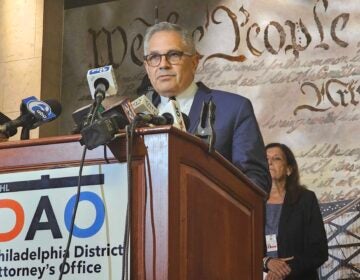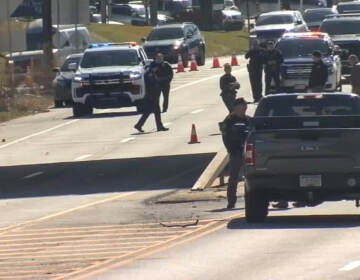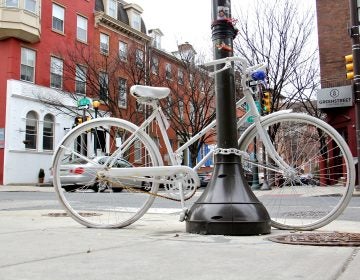11 cyclists are dead and the city has done nothing, mourners say at silent ride
Some came with physical scars, reminders of suddenly opened car-doors and drunk drivers. Others came with emotional scars, memories of suddenly lost loved-ones.
Listen 3:19
The ride began on the Art Museum steps. (Bastiaan Slabbers for WHYY)
“This is really part of my healing process,” explains Lou Savastani as he leans against his road bike at the steps of the Philadelphia Museum of Art. “Two years ago, I was hit by a car, spent the better part of a year in a wheelchair, and [did] a lot of recovery.
“I’m just coming out here to try and make sure this doesn’t happen to other people.”
Savastani’s is a remarkably common story among the nearly 200 cyclists who gathered Wednesday evening for Philadelphia’s 14th Annual Ride of Silence, braving ride to participate in the somber action.
Some came with physical scars, reminders of suddenly opened car-doors and drunk drivers. Others came with emotional scars, memories of suddenly lost loved-ones.
All came with their reasons to ride eight miles in absolute quiet through the cold, funereal rain.
The Ride of Silence started in Texas, in 2003, as a memorial to cyclists who died in the past year while out on their bikes. It’s expanded since to cities across the U.S. and all over the globe. Along the way, the Ride also grew into a silent protest for better bicycle infrastructure.
“I was in a hit and run in 2009, that left me with my neck broken,” said Amanda Gillern. “And nothing has changed. That’s why I’m here.”
In the Delaware Valley, 11 cyclists, ages 8 to 80, were struck by cars and killed in the last eleven months. Pablo Avendano, 34, was the most recent. The bike courier was hit by an SUV while he was riding in an unprotected bike lane on Spring Garden Street on a rainy Saturday night. Dozens of Avendano’s friends, including Gillern, came out in his honor.
“I’m out here because Pablo got killed,” said Christopher “Chitah” Williams, a bike courier who worked with Avendano. “Ran over by a car. It’s crazy. He was in a bike lane, he had his helmet on, all the lines were on. He was a seasoned rider; He was a real real safe dude. They need to investigate this.”
Like Avendano, Emily Fredricks was killed while riding in an unprotected bike lane, on Spruce Street. Her family came in from out of town, wearing bright yellow shirts adorned with photos of Emily.
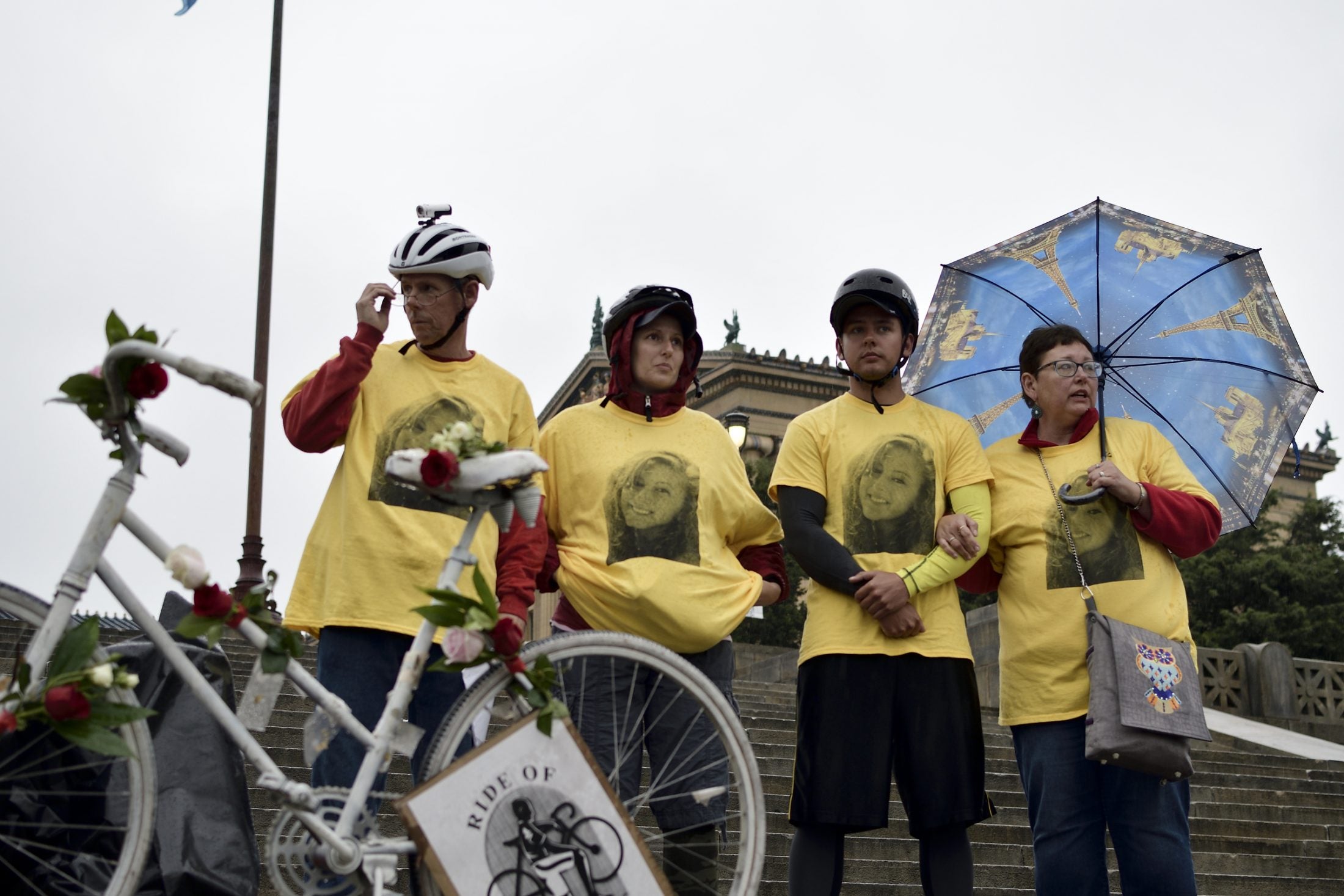
“My daughter was Emily,” said Laura Fredricks. “She was 24 years old, and she was killed at the end of November out here in Philly. She was killed by a sanitation truck while she was biking to work. And we’re here to remember Emily and everyone else that was killed this past year.”
“We want safer streets for all,” Fredricks added. “We want safer streets for all.”
‘Vision Zero’ falters as death count ticks up
Safety advocates argue that adding small physical barriers, like plastic delineator posts or slightly raised curbs, to “protect” bike lanes will help drivers from straying into them and thereby prevent crashes. They have data on their side: various studies have suggested that protected bike lanes reduce injuries between 28 and 90 percent.
Despite formally adopting a “Complete Streets” policy — saying streets should accommodate all users, not just cars — in 2012, and a Vision Zero implementation plan for eliminating traffic deaths last year, the city’s made scant progress on building protected bike lanes.
During his campaign, Mayor Jim Kenney promised to build 30 miles by 2022, but so far there are fewer than four miles built or in the works (including a nine-month pilot for protected lanes on Market Streets and JFK Boulevard that was supposed to begin this spring).
Even though numerous studies show that they reduce crashes, boost nearby property values, and don’t cause traffic jams, many residents oppose the protected bike lanes because it means they keep cars out, and that means no quick stops in the bike lane for deliveries or pickups.
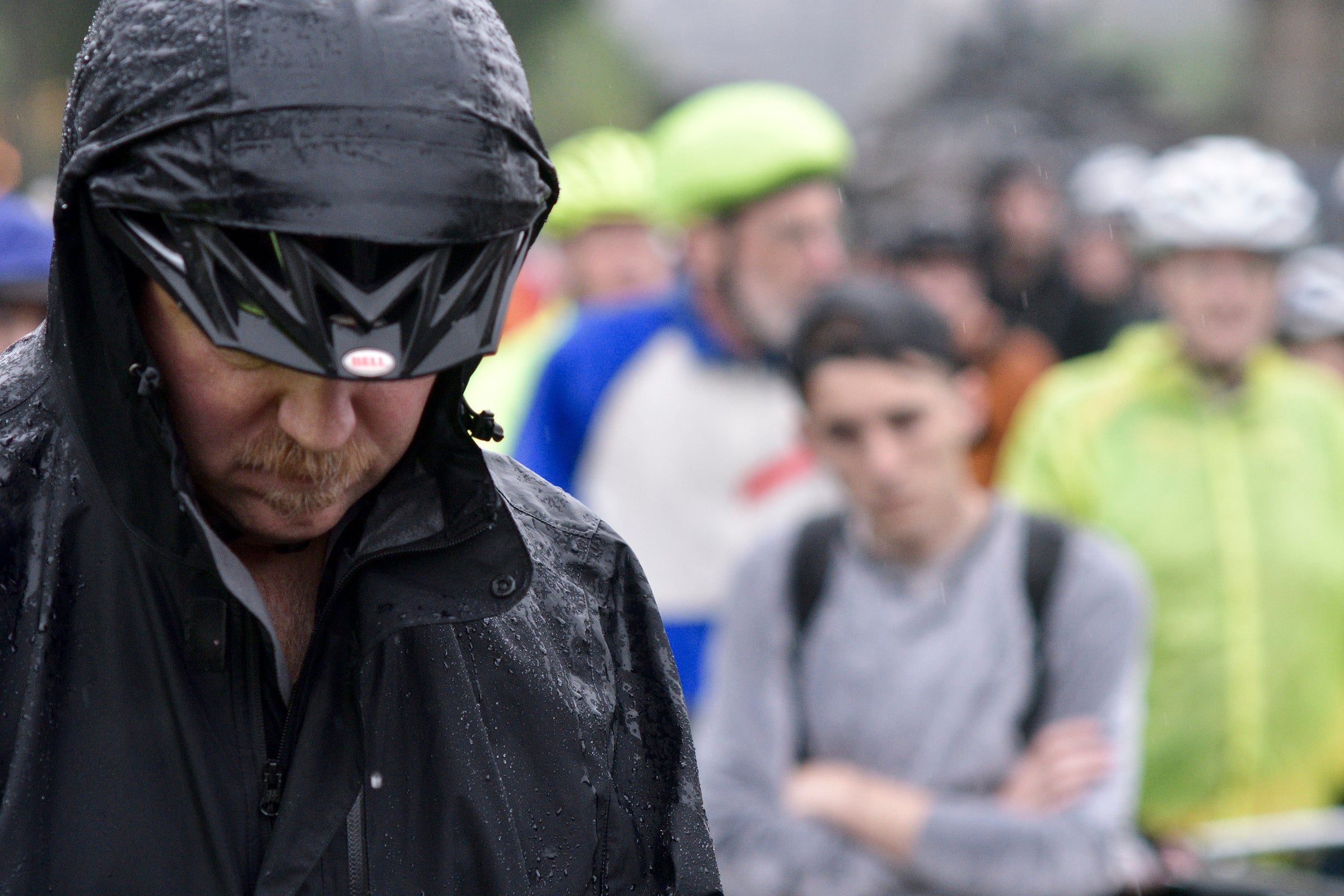
According to the City’s Vision Zero Action Plan, Philadelphia has the highest per capita traffic death rate among peer cities at six per 100,000.
City officials proposed adding barriers to the bike lanes on Pine and Spruce streets in Center City two years ago. But the proposal stalled in the face of neighborhood opposition. The city is now proposing to merely move the bike lanes to the left side of the street, where cyclists are more visible to drivers. But that proposal has also been met with community resistance.
Shortly before the Ride of Silence began, Philadelphia Open Ride founder Alexandria Schneider offered why she came that night.
“I’m here because we’ve had to plan memorial rides for at least two people this year,” she said. “We don’t want to have any more deaths. We don’t want to plan any more memorials.”
WHYY is your source for fact-based, in-depth journalism and information. As a nonprofit organization, we rely on financial support from readers like you. Please give today.




